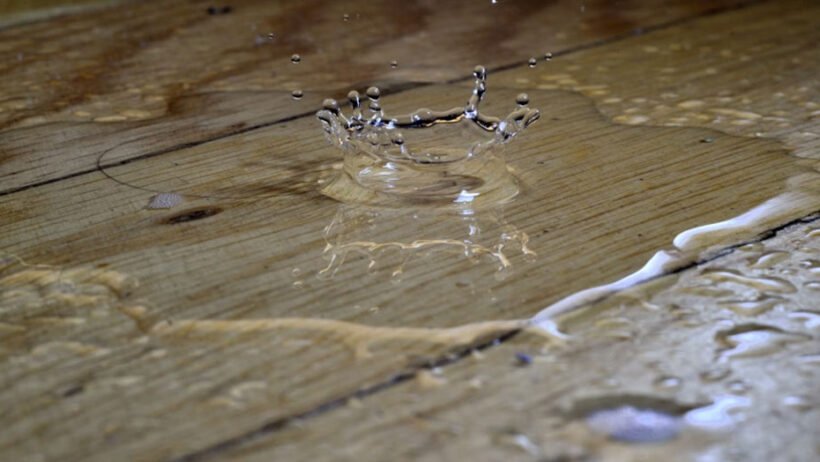Water moves to the lowest point and finds any gap you leave. You protect your property when you guide that movement with clear paths, tight seals, and fast responses to small warnings. Start with a map of where water enters, where it should travel, and where it can pool. Then set a schedule that keeps each zone clear, dry, and ready for storms or daily use.
Know Your Property’s Water Paths
Walk the perimeter after a steady rain and watch how water behaves. Track roof runoff, yard grading, and the way patios or walkways direct flow. Note any spots where puddles linger longer than the rest of the yard. Mark these locations on a simple sketch and log the time it takes for water to drain. That sketch guides your work and shows you the few changes that deliver the biggest gains.
Check the interior with the same eye. Look under sinks, behind toilets, around water heaters, near washing machines, and along basement walls. Touch drywall near baseboards and feel for soft spots. Smell for musty air in closets and storage rooms. Small changes in smell or texture often signal a drip that hides behind finishes. Track humidity with a simple monitor, and flag rooms that rise above the rest of the house.
Roof, Gutters, and Downspouts
Your roof takes the first hit in every storm. Scan shingles for lifted edges, cracked tabs, or missing pieces. Clear valleys and the area around vents. Replace brittle sealant at flashing and skylights. When you see dark streaks, check for trapped moisture under shingles near that line. Edge metal should sit tight against the roof line to keep wind-driven rain from curling underneath.
Gutters need free flow to carry water away from the structure. Scoop out leaves, rinse with a hose, and confirm that downspouts discharge several feet from the foundation. Add extenders where splash blocks fall short. If water shoots past elbows during heavy rain, increase downspout size or add a second run to share the load. Where trees drop heavy debris, consider guards that snap in place and lift off for cleaning. Guards do not remove all work, yet they cut clogs between cleanings and protect fascia.
Plumbing Systems and Early Leak Detection
Hidden plumbing leaks create the most expensive damage because they work in quiet spaces. Scan for slow meter movement when no fixtures run, and listen for soft hissing near supply lines. You can book a quick inspection with a local plumber for pressure testing, camera checks, and dye tests that reveal pinhole leaks. After the visit, replace brittle supply hoses on washing machines and dishwashers, secure shutoff valves that stick, and tighten loose traps under sinks.
Water heaters deserve special attention. Sediment builds in tanks and raises stress on the liner. Drain a few gallons from the valve until the water runs clear. Check the anode rod at the interval your model needs and swap it before it dissolves fully. For tankless units, flush with the recommended solution to remove scale. These steps extend service life and reduce leak risk during peak demand.
Appliances and Fixtures That Pose Risks
Household workhorses can flood a room when parts wear down. Place washing machines on drip pans with a drain if your laundry sits on an upper floor. Check the floor under the fridge for dampness after you move it for coil cleaning. Replace plastic icemaker lines with braided metal lines that hold pressure. Shower doors need fresh caulk at the bottom rail, and tub surrounds need clean grout lines to keep water inside the wet area.
Toilets send early signals before a leak reaches the flooring. Rocking bases, discolored caulk rings, and constant refills point to wax ring issues or tank parts that stick. Swap worn flappers and tighten tank bolts with care. Replace a wobbly toilet before movement cracks the seal. Kitchens tell on leaks through warped cabinet floors and swollen toe kicks. Shine a flashlight along the edges and look for rippling or bulging that signals steady drips.
Exterior Drainage and Hardscape
Water responds to small changes in slope. Rework short sections of soil along walkways and patios to push runoff toward lawn drains or gravel beds. Install French drains only where surface fixes cannot solve pooling. Maintain swales that move water along property lines without crossing them. Keep curb cuts and street drains near your driveway clear of leaves so heavy rains do not back water into your yard.
Hardscape features should help, not hinder. Patios need a gentle pitch away from the house. Retaining walls require proper weep holes and gravel backfill. Stairs near doors need a landing that sheds water and a threshold that seals against wind-blown rain. Where downspouts cross walkways, use solid pipe under the slab and cleanouts at both ends. That setup protects both the walkway and the drain route.
Smart Monitoring and Automatic Shutoff
Sensors and valves give you a second layer of defense. Place leak sensors under sinks, behind toilets, near the water heater, and under the fridge. Pair them with a hub that sends alerts to your phone. Install an automatic shutoff valve on the main line to stop the supply when sensors detect water or when a pipe bursts during a cold snap. Test the system each season so you trust it during a real event.
Track humidity in risk rooms like basements, kitchens, and laundry spaces. Keep readings in the healthy range with ventilation, dehumidifiers, or small changes in daily habits. Simple tweaks, such as running bath fans for ten minutes after a shower, make a difference. A small logbook near the mechanical room helps you track filter changes, tank flushes, and valve tests. Clear records keep maintenance on schedule and reveal patterns that merit deeper fixes.
Response Plan and Insurance Readiness
Leaks still happen, so plan your first moves now. Post the main shutoff location near the panel or in a cabinet and share it with everyone in the home. Store a wet vac, heavy-duty trash bags, microfiber towels, and a box fan together. Keep plumber, roofer, and restoration contacts in your phone and on a printed list. Photograph rooms once a year and save the images in a cloud folder. Those images speed claims and guide repairs.
Review your policy limits for water incidents and confirm whether you carry coverage for sewer backups or sump pump failures. Ask your agent for the specifics of drying, demo, and rebuild allowances. Carry enough coverage to restore finishes to current codes after a major event. A clear understanding here cuts stress when you need help fast.

You protect your property when you direct water with intention, inspect the weak spots, and respond to small warnings without delay. Focus on roofs, gutters, plumbing, appliances, foundations, drainage, monitoring, and a simple action plan. Keep your tools ready, keep your records clear, and keep your schedule steady. These habits turn heavy rain and daily wear into manageable tasks, and your home rewards that care with dry rooms and strong value.








